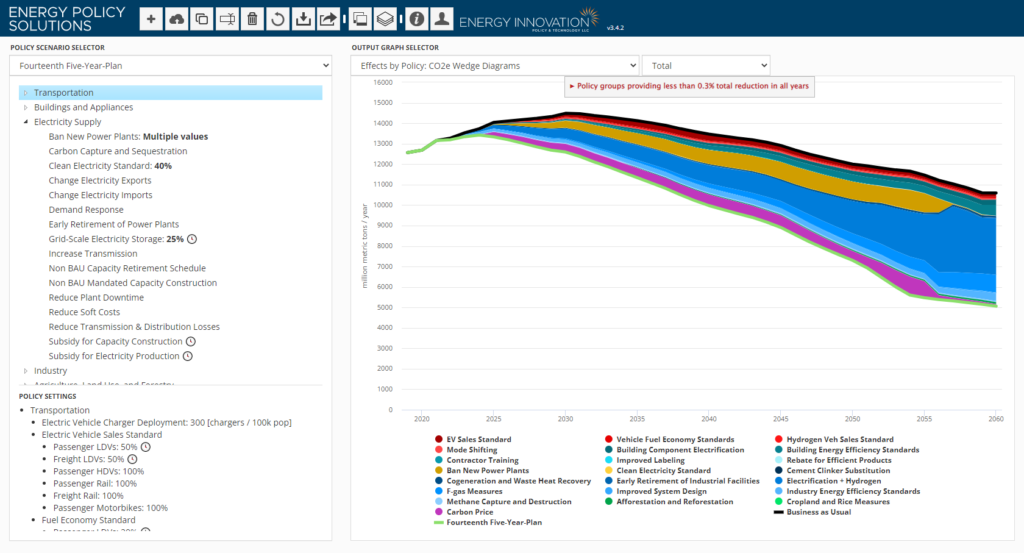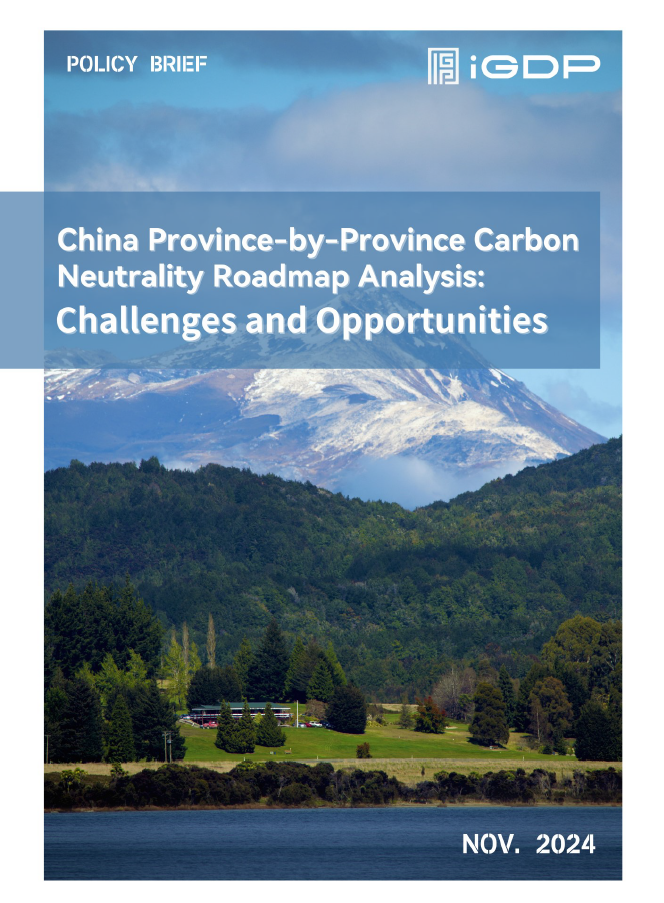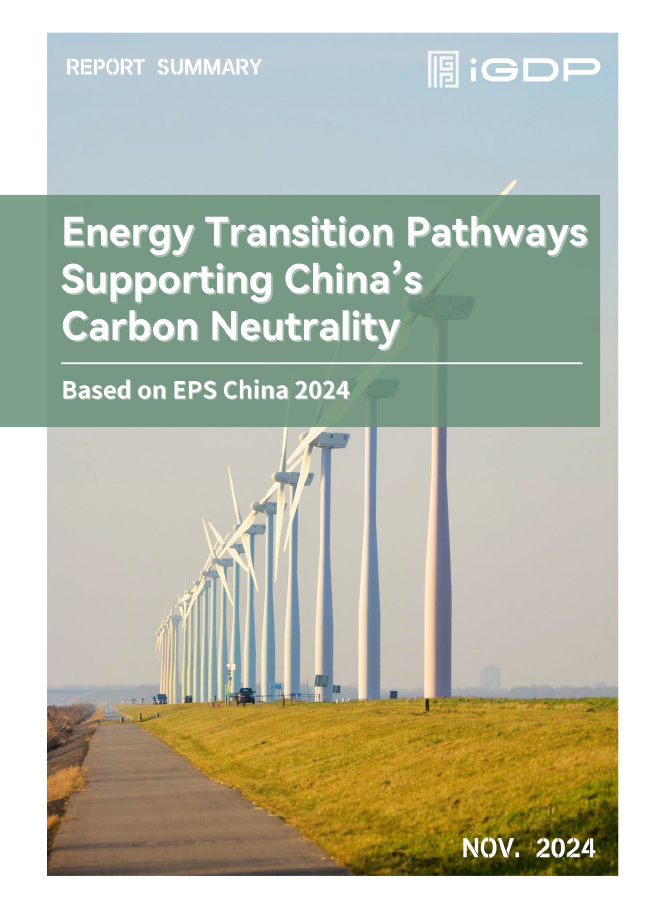Energy Policy Simulator
Energy Policy Simulator China Model 2024 (EPS China 2024) is maintained by Energy Innovation (EI) and iGDP.
EPS China 2024 is a system dynamics model that simulates and evaluates the impact of energy and climate policies on energy consumption, greenhouse gas emissions, pollutant emissions, investment demand, and related macro-level social and economic indicators. The web-based tool supports policy impact simulations for the period from 2021 to 2060, containing hundreds of output variables, including various types of energy consumption, GHG and air pollutant emissions, changes in cash flows of market players, employment figures, GDP changes, and public health impacts. Users can personalize the policy scenarios (including implementation level and schedule of different policy combinations) according to their policy research needs with a user-friendly interface. The assessment results of the policy scenarios are visualized through interactive graphics. The business-as-usual (BAU) scenario represents the policy mix prior to the announcement of the “dual carbon” target and the natural evolution of technology trends. A 14th Five-Year Plan policy scenario is also included, incorporating the latest policies at the national level through the end of 2021.
Subnational Applications Based on EPS China 2024
iGDP collaborated with local research institutions and experts and built EPS model for Shanxi, Guangdong, Jiangxi, Hainan, Chongqing, Anhui and other regions.
History of EPS Implementation in China
In 2017, EI collaborated with China’s National Center for Climate Change Strategy and International Cooperation (NCSC) and the Energy Research Institute of the National Development and Reform Commission (ERI NDRC) to jointly develop the first EPS China model. The EPS China 2017 online tool, which was accompanied by a research report, provided important support for research on green and low-carbon transition at the national level. The EPS tool has since been applied to low-carbon development studies at the regional level, including projects in Hong Kong and Zhejiang supported by the World Resources Institute, and a Chongqing study by iGDP in support of the Beijing Institute of Green Finance and Sustainable Development.
In 2020, in the context of China’s new “dual carbon” strategy, EI, together with iGDP and NCSC, launched an expansion and update of the EPS China model to support the analysis of policy pathways, technology options, and investment focuses for China’s carbon peaking and neutrality efforts.
The newly released EPS China 2021 includes a more detailed industrial classification and a macroeconomic analysis module, allowing for more complex, flexible and country-specific policy scenarios. Input data for the tool is drawn from public sources (e.g. China’s Statistical Yearbooks), research on China from authoritative institutions (e.g. Tsinghua University), and internal modeling by iGDP. Some data with international universality is drawn from research not specific to China.
Access the EPS China 2024 web tool:
Access the EPS China 2024 Subnational web tools:
Download the EPS China Tool Manual in Chinese:
The EPS China 2024 is freely available under a Creative Commons Attribution 4.0 International Public License.



